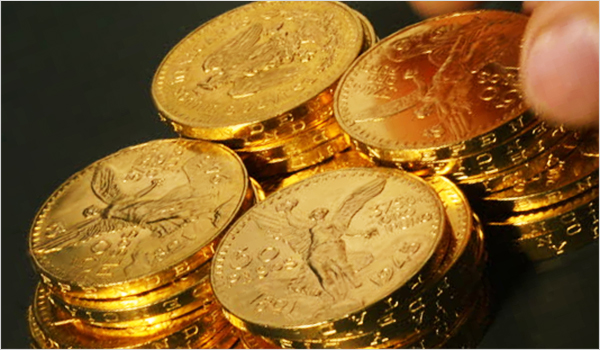
The gold bullion coins from Mexico made in honor of their independence from the Spanish colonizers. Mexican coinage history had a colorful beginnings that can be traced back to the ancient Aztecs.
Mexican gold coins are not as popular as the other gold bullion coins like the gold American eagle coins and the Philharmonikers.
Long ago, the Aztec Empire in central Mexico worshipped the sun god. The Aztecs became fascinated with gold because its yellow metal and its shiny luster are reminiscent of the radiant powers of Huitzilopochtli or Tonatiuh.
But at that time, gold was not a form of currency since ancient Mexicans traded with cacao beans.
The first Mexican coins were minted when Spain colonized Mexico. The first Mexican gold coins were the escudo, half escudo, 2 escudos, 4 escudos, and 8 escudos.
These Mexican gold coins were minted between the years 1566 and 1833. The escudos became obsolete when the peso coinage was introduced.
The Centenario coin
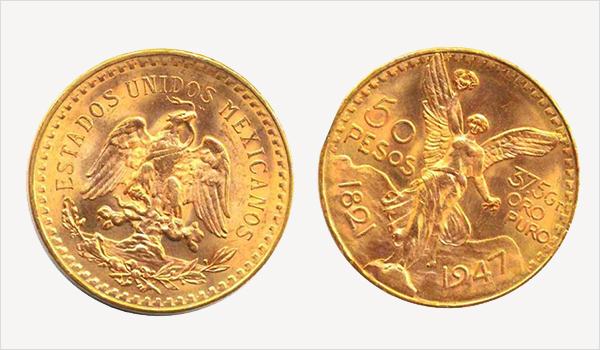
The centenario de oro is the Mexican 50 peso gold coin that was first issued in 1921 to commemorate the 100th anniversary of Mexico’s War of Independence. The government of Mexico stopped the minting of the coin in 1947.
The obverse of the 50 peso gold commemorative coin is depicted with the iconic el Angel de la Independencia or the Angel of Independence. The design was inspired by the image of Nike, the winged Greek god of victory. She holds up a laurel leaf in her right hand and she grasps a broken chain in her left.
Behind the Angel of Independence are Popocatepetl and Iztaccihautl, the famous volcanoes in Mexico.
Also inscribed on the obverse is the face value “50 PESOS”, the gold content, and the date mint date stamped across the legend 1821 which is the year of Mexico’s independence.
The nation’s coat of arms, illustrating a Mexican eagle feeding on a snake while sitting atop a cactus, is shown on the reverse of the centenario de oro.
The centenario gold coin contains 1.2057 oz (37.5 grams). The 21.5 karat Mexican 50 peso coin is actually an alloy of 90% gold and 10% copper.
Before the release of the South African Krugerrand in 1967, the gold centenario dominated the world bullion coin market. Today, some gold coin investors favor the Mexican 50 peso coin because it has a lower premium (dealer’s mark up price) compared to other gold bullion coins. The 50 peso gold coin values are based on the current bullion spot price plus the premium.
The Libertad coin
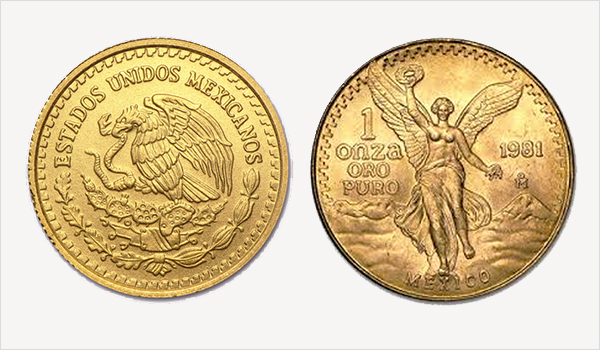
The newer Mexican gold bullion coins are called the Libertad. The oro libertad or the gold Libertad is actually a remake of the older 50 peso Centenario gold coin.
Since its initial release in 1981, the gold Libertad coins have been minted in 1/20, 1/10, ¼, ½, and 1 oz denominations. There are two types of Libertad coins for each denomination.
The obverse of the type 1 Libertad coins (minted between 1991 and 1995) resembled the centenario de oro coins.
The type 2 Libertad coins (issued from 1996 until present) have an image of the Winged Victory or the “el Angel” in a different angle. However, the images of the two mountains are still shown on the background.
The reverse designs of the Type 1 and 2 Libertad gold coins vary. In each type, the eagle on Mexico’s national emblem is shown in different angles. The oro libertad are also available as proof coins.
The 10 Peso and 5 Peso coins
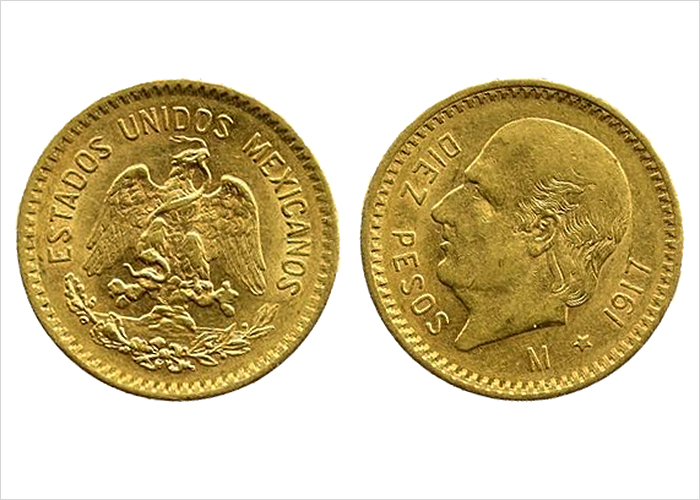
The Mexican diez pesos and cinco pesos gold coins have an identical reverse design showing an effigy of Miguel Hidalgo. Mexicans hail Hidalgo as the Father of the Nation when he led the 1910 revolution.
The face value of the gold coins is written in words as: DIEZ PESOS and CINCO PESOS. The reverse side also bears the mintmark and the mint year.
The obverse is stamped with Mexico’s coat of arms illustrating a forward-facing eagle devouring a snake, and the legend “ESTADOS UNIDOS MEXICANOS.”
The 20 Peso coin
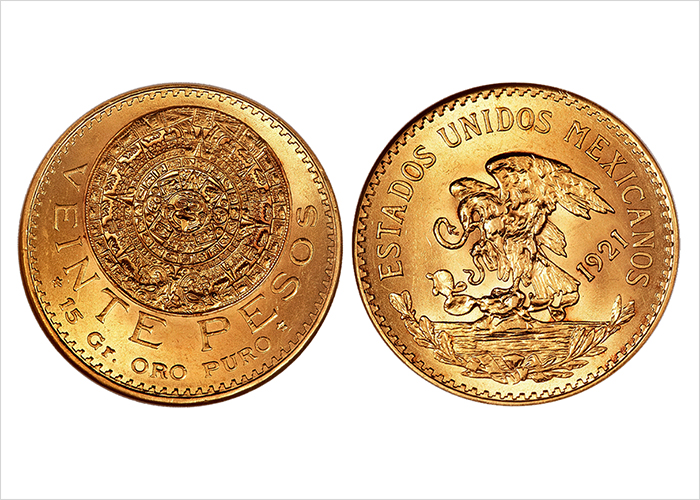
The reverse of the 20 Pesos gold coin is struck with an image of an Aztec Calendar or the Sun Stone, and the face value in “VEINTE PESOS.” The 20-peso gold coin featuring the Aztec Sun Stone (picture shown above) was first struck for circulation in 1917 until 1921. The denomination was issued under the authority of the Mexican Monetary Reform Act of 1905.
The veinte peso coin carries the modern coat of arms showing an eagle facing sideways on its obverse. The words “ESTADOS UNIDOS MEXICANOS” are also struck on the heads side.





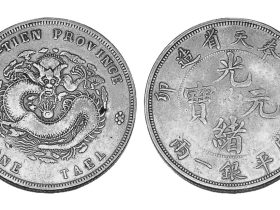
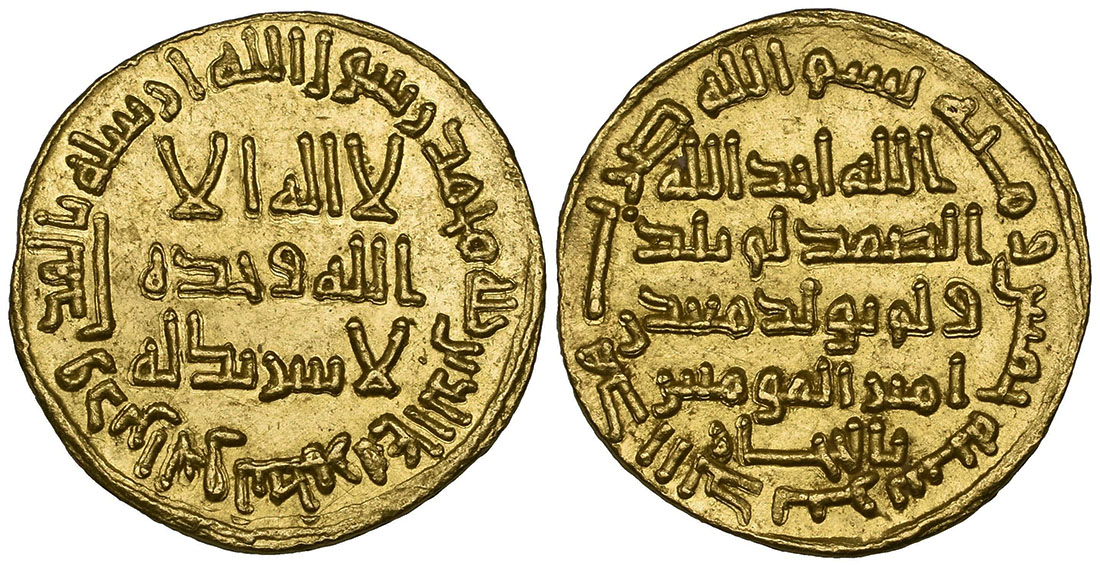

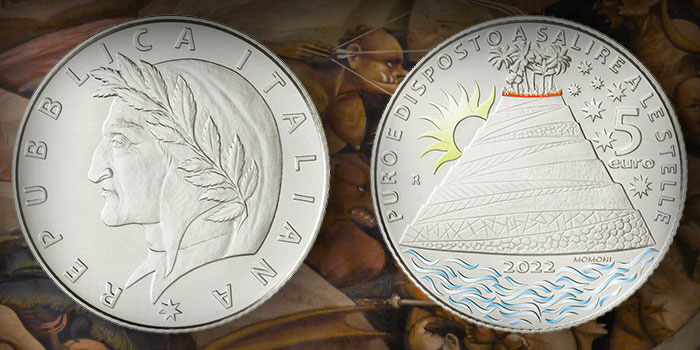

Leave a Reply